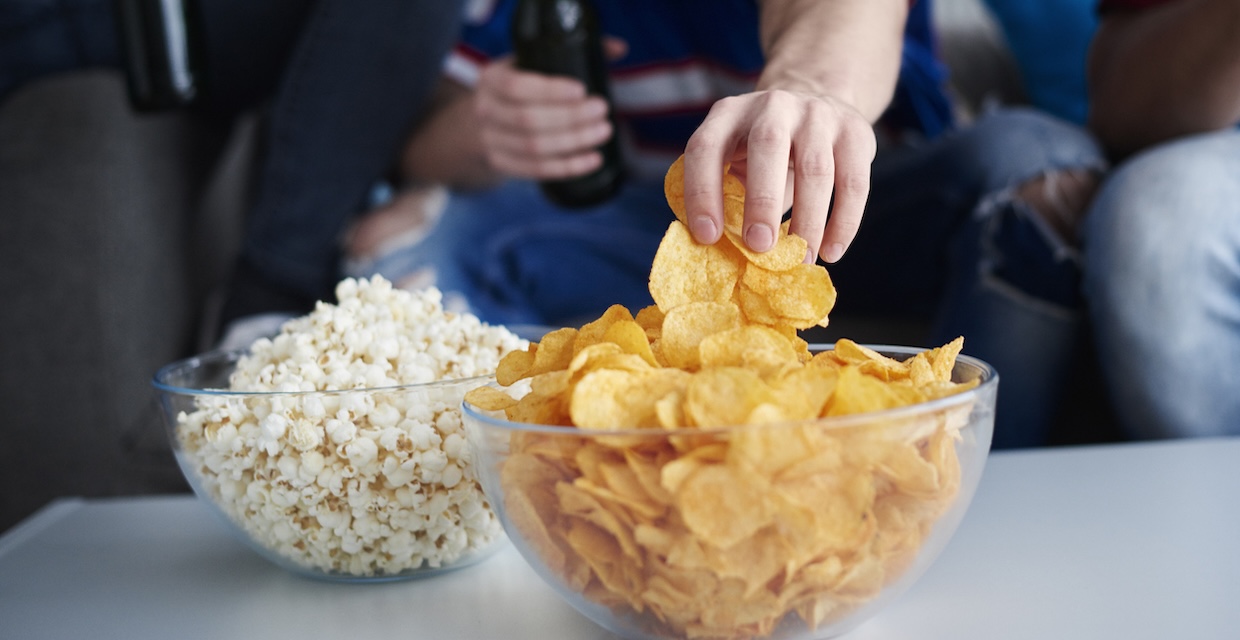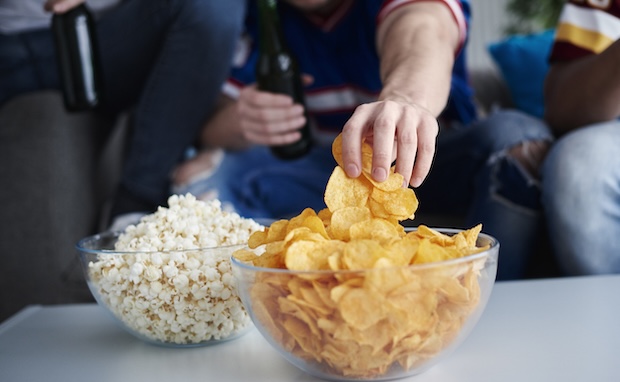Key Points:
- Ultra-processed foods (UPFs) are industrial food products high in cheap ingredients, added sugars, sodium, and unhealthy fats, and low in essential nutrients like fiber, vitamins, and minerals.
- The overall scientific evidence consistently links higher UPF consumption to adverse health outcomes, including increased risks of all-cause mortality, cardiovascular disease, and type 2 diabetes.
- You don’t need to remove UPFs entirely, but focusing on replacing the most common UPFs with whole or minimally processed alternatives can make a significant difference in your health.
You’ve likely heard the term “ultra-processed food” (UPF) and may have seen headlines suggesting they are linked to poorer health. But what exactly counts as ultra-processed? Does this mean you have to cook every single meal from scratch for the rest of your life?
The short answer is no.
The goal isn't to create a rigid, restrictive "avoid list" that's impossible to follow. Instead, it’s about understanding which foods fall into this category and how to prioritize reducing their consumption in a realistic, sustainable way that fits your life.
Nutrition is complex, but by learning how to spot the most common UPFs and making simple swaps, you can significantly improve your diet quality without sacrificing your sanity. Let’s explore more.
What are ultra-processed foods (& why limit them)?
When you pick up a packaged food, it can be hard to tell how much processing it has undergone. Is a can of black beans considered a UPF like a sugary breakfast cereal?
To help answer these questions, the nutrition community often uses the NOVA classification system, which categorizes foods based on the extent and purpose of their industrial processing.
Ultra-processed foods, or UPFs, are industrial formulations made mostly of cheap industrial sources of dietary energy, fat, and sugar, plus additives, using a series of processes.
These foods are engineered for three main purposes:
- Hyper-palatability: Irresistibly tasty, borderline addictive, encouraging overconsumption
- Long shelf life: Lasting weeks or months without spoiling
- Convenience: Always ready-to-eat, requiring no preparation
This processing results in foods that are energy-dense, high in unhealthy fats, refined starches, free sugars, and salt, but significantly deficient in protein, dietary fiber, and essential micronutrients.
The benefit of reducing UPFs
Why do registered dietitians recommend prioritizing unprocessed foods? Because the weight of the evidence shows that a diet high in UPFs is consistently linked to poorer health outcomes.
“I help women build confidence in the kitchen by finding simple swaps for their go-to snacks and meals – so they can feel better without feeling deprived,” says Andrea Whitley, RD. “The goal is progress, not perfection, so we focus on realistic alternatives that taste good and support hormone health.”
Studies have found that a greater exposure to ultra-processed foods is directly associated with a higher risk of incident all-cause mortality and heart disease-related mortality. This means that when UPFs make up a large portion of a person’s diet, health risks tend to increase.
In terms of metabolic health, high consumption of UPFs is consistently associated with an increased risk of overweight, obesity, metabolic syndrome, and elevated waist circumference. The way these foods are formulated can disrupt your body’s signals for hunger and fullness, making it easy to consume too many calories.
You may also be missing out on vital nutrients. Researchers have observed that high UPF consumption is inversely associated with a lower dietary fiber intake, which means that the more UPFs you eat, the less fiber you’re likely to eat. This is a concern because fiber is crucial for digestive and heart health.
The impact isn't just physical. Research has also found an association between ultra-processed food consumption and a higher risk of adverse mental health outcomes like anxiety and depression.
How to identify ultra-processed foods
How can you distinguish a minimally processed food (like frozen fruit or plain yogurt) from a heavily ultra-processed one?
The easiest method is to look for these common "red flags" on the ingredient list:
- Long, unfamiliar ingredient lists. If a product has a shelf life of months and contains more than five ingredients you wouldn't find in a home kitchen, it’s a UPF.
- Added isolates and modifiers. Ingredients like hydrolyzed proteins, soy protein isolate, maltodextrin, or modified starches. These are substances extracted from whole foods then industrially modified.
- Cosmetic additives. Artificial colorings, flavors, emulsifiers, bulking agents, or non-sugar sweeteners. These are used to make the food look, feel, or taste more appealing.
- Excessive added sugar and sodium. Check the nutrition panel. For example, a single serving may contain high amounts of added sugar (over 5-10g) or be very high in sodium (over 500mg).
Remember the nuance: Not all packaged food is the enemy. Foods like simple bread, plain canned vegetables, or basic cheese are examples of processed foods (NOVA Group 3) that are great for convenience. The issue is with the ultra-processed (NOVA Group 4) products designed primarily to be cheap, profitable, and hyper-palatable – these are the ones to limit.
The most common UPFs to reduce (& simple swaps)
This isn't a list of foods to banish completely, but rather, a guide to identify areas where small changes can lead to big improvements in your overall nutrition and health.
“I focus on sustainable habits like label literacy, mindful grocery shopping, and balanced plates that honor both flavor and wellness,” ays Andrea Whitley, RD. “I teach clients how to upgrade one meal or snack at a time, building long-term habits that feel doable and delicious.”
Sugary drinks & fruit-flavored beverages
This category includes sodas, sports drinks, sweetened teas, and fruit drinks (which contain little actual fruit juice). These are arguably the most notorious UPFs because they are packed with rapidly absorbed sugars and offer virtually no nutritional value.
The liquid calories in these drinks don't trigger the same fullness signals as solid food, making it easy to overconsume.
Higher consumption of sugar-sweetened beverages is significantly associated with the development of metabolic syndrome and type 2 diabetes. Even independent of body weight, too much dietary sugar significantly raises the concentrations of triglycerides, total cholesterol, and "bad" LDL cholesterol .
| Prioritize reducing | Healthier swaps |
|---|---|
| Sodas, sugary coffees, bottled fruit drinks, energy drinks | Water, sparkling water with a splash of 100% juice, unsweetened herbal tea, or simple water infused with fresh fruit or cucumber |
Processed & cured meats
This group includes products preserved by salting, curing, fermenting, smoking, or adding chemical preservatives like nitrates, such as hot dogs, bacon, deli meat, sausage, and salami.
These meats often contain high amounts of sodium and saturated fat. More critically, high consumption of processed meats is significantly associated with an increased risk of colorectal, colon, and rectal cancers.
| Prioritize reducing | Healthier swaps |
|---|---|
| Bacon, salami, hot dogs, many deli slices (turkey/ham), and heavily seasoned/cured sausages | Freshly roasted chicken, baked or grilled fish, homemade black bean burgers, or plain, unsalted nuts and seeds |
Mass-produced baked goods & desserts
These are pre-packaged items like store-bought cookies, donuts, pastries, cakes, and many crackers. While a simple homemade cookie might be a processed food, the mass-produced versions are engineered to be UPFs.
They are often made with large amounts of highly refined flours, sugar, processed vegetable oils, and a host of artificial ingredients to maintain texture, color, and an impossibly long shelf life. They also typically offer minimal fiber or protein.
Craving cookies? Make them yourself! A homemade cookie – even one with butter and sugar – is still a better option than an industrially manufactured one.
| Prioritize reducing | Healthier swaps |
|---|---|
| Pre-packaged snack cakes, colorful cookies, commercial pastries, and most convenience-store crackers | Whole-grain toast with mashed avocado, plain oatmeal with fruit and nuts, fruit (like an apple) with peanut butter, or a simple whole-grain cracker with cheese |
Instant noodles & ready-to-eat/heat meals
While the convenience of a frozen dinner or instant cup of soup is undeniable on a busy night, many fall into the ultra-processed category. They are formulated to be low-cost, shelf-stable, and hyper-flavored to make them palatable.
These products are often very high in sodium (sometimes containing a full day's worth in one serving!), refined starches, and additives, but surprisingly low in protein and micronutrients.
Need grab-and-go food on hand? Try to set aside some time to prep some meals you can freeze and use as needed.
| Prioritize reducing | Healthier swaps |
|---|---|
| Many frozen pizzas, instant noodle cups, shelf-stable canned soups (unless marked "low sodium"), and microwaveable ready-meals | Simple pre-made meals you freeze yourself, quick sheet-pan chicken and vegetables, or low-sodium canned beans/lentils mixed with pre-cooked brown rice |
Making sustainable changes to your diet
Transitioning away from UPFs doesn't have to be overwhelming. Remember that the goal is progress, not perfection. This shift is about building consistent habits that enhance your overall health and relationship with food.
Focus on adding, not just taking away
Instead of obsessing over what you are avoiding, focus on what you can add to your plate. If your meals are built around minimally processed foods (like whole vegetables, fruits, whole grains, and lean proteins), you naturally crowd out the ultra-processed options.
Think about incorporating more of the building blocks of a nutritious diet (like whole grains, fruits, and vegetables), and you’ll find the process is about adding, not restricting.
When you start focusing on filling your plate with these choices, you’ll find you feel more satisfied for longer, which can naturally help you stop intense food cravings.
Reconnect with your kitchen
One of the most powerful changes you can make is simply cooking at home more often. UPFs are designed to replace home-cooked meals, so reversing that trend is key.
You don't need to become a gourmet chef overnight. Start small:
- Prep in bulk: Cook a large batch of chicken, a carb like quinoa or potatoes, or roasted vegetables on a Sunday to use for quick lunches and dinners throughout the week.
- Embrace simple snacks: Keep a bowl of whole fruit on the counter, pre-chop vegetables, and portion out plain nuts. Try to make your own snacks instead of buying them. Dips like hummus are simple to make, and you can even make your own protein bars if that’s your snack of choice!
- Embrace volume eating: This focus on whole foods is key, especially if you want to explore the benefits of volume eating for managing appetite, where foods with a high water and fiber content take up more space in your stomach for fewer calories.
- Mindful eating: When you do choose a packaged food, take a moment to be present with the meal. It might sound a bit silly to “be in the moment” with a snack bar, but this is a critical component of healthy eating habits. This step helps you stay attuned to your body’s natural hunger and fullness cues – not to mention it helps you savor every bite!
Navigate the maze of nutrition with personalized support
The world of nutrition is endlessly confusing, and what works for each person is highly personal. What works for one person’s budget, schedule, and palate may not work for yours. If you’re feeling overwhelmed, are struggling with specific food behaviors, or aren't sure where to start, you don't have to figure it out alone.
A registered dietitian can help you navigate the confusing world of ultra-processed foods. They can create a personalized, evidence-based nutrition plan that focuses on sustainable improvements while honoring your food preferences and lifestyle. They can also provide the non-judgmental support needed to shift your mindset away from rigid restriction.
Final thoughts
The ultra-processed food category is complex, but the health message is simple: prioritize eating whole, minimally processed foods that are closest to their natural state, most of the time. This simple strategy can help reduce your intake of excess sugars, sodium, and unhealthy fats, while naturally increasing your intake of essential fiber, vitamins, and minerals.
A registered dietitian (RD) can help you identify your personal biggest UPF culprits and find practical, culturally relevant swaps that you actually enjoy. They can help you create a meal planning routine and ensure you’re meeting all your nutritional needs without feeling deprived. They provide personalized strategies that go beyond a simple "list of ultra processed foods to avoid" to create a realistic path forward.
Connect with a registered dietitian covered by your health insurance today.
Frequently asked questions (FAQs)
Are all packaged foods ultra-processed?
No, not at all. There are four groups in the NOVA classification. Foods that are minimally processed (Group 1, like frozen fruits and vegetables) or processed foods (Group 3, like canned beans, plain cheese, or simple bread made with flour, water, yeast, and salt) are packaged but are not considered ultra-processed. A minimally processed food should contain only one or a few simple, familiar ingredients.
What about protein bars or 'healthy' packaged snacks?
This is where reading the ingredient list is critical. Many products marketed as "healthy" or "high-protein" fall into the ultra-processed category because they rely on protein isolates (like whey protein isolate), fiber additives (like chicory root fiber), and non-sugar sweeteners to achieve their nutritional profile. A handful of almonds and an apple is a naturally minimally-processed snack; a bar with 20 ingredients is often a UPF.
How quickly can I see results from cutting back on UPFs?
You can start feeling the positive effects of reducing ultra-processed foods quickly. Many people report improved digestion, reduced bloating, and more stable energy levels within a week or two, often due to the increased fiber and reduced added sugars and sodium. Measurable health markers, such as cholesterol and blood pressure, generally improve over a few months of consistent effort.
The views expressed by authors and contributors of such content are not endorsed or approved by Fay and are intended for informational purposes only. The content is reviewed by Fay only to confirm educational value and audience interest. You are encouraged to discuss any questions that you may have about your health with a healthcare provider.
Sources
Fay Nutrition has strict sourcing guidelines and relies on peer-reviewed studies, academic research institutions, and medical associations. We avoid using tertiary references.
- Association between ultra-processed food consumption and mental health outcomes: A systematic review and meta-analysis - Nutrients
- Association between red and processed meat consumption and colorectal cancer risk: a comprehensive meta-analysis of prospective studies - GeroScience
- Dietary fibre intake and its association with ultraprocessed food consumption in the general population of Switzerland: analysis of a population-based, cross-sectional national nutrition survey - BMJ Nutrition, Prevention & Health
- Sugar-Sweetened Beverages and Risk of Metabolic Syndrome and Type 2 Diabetes: A meta-analysis Diabetes Care
- The UN Decade of Nutrition, the NOVA food classification and the trouble with ultra-processing - Public Health Nutrition
- Ultra-processed food exposure and adverse health outcomes: umbrella review of epidemiological meta-analyses - The BMJ











